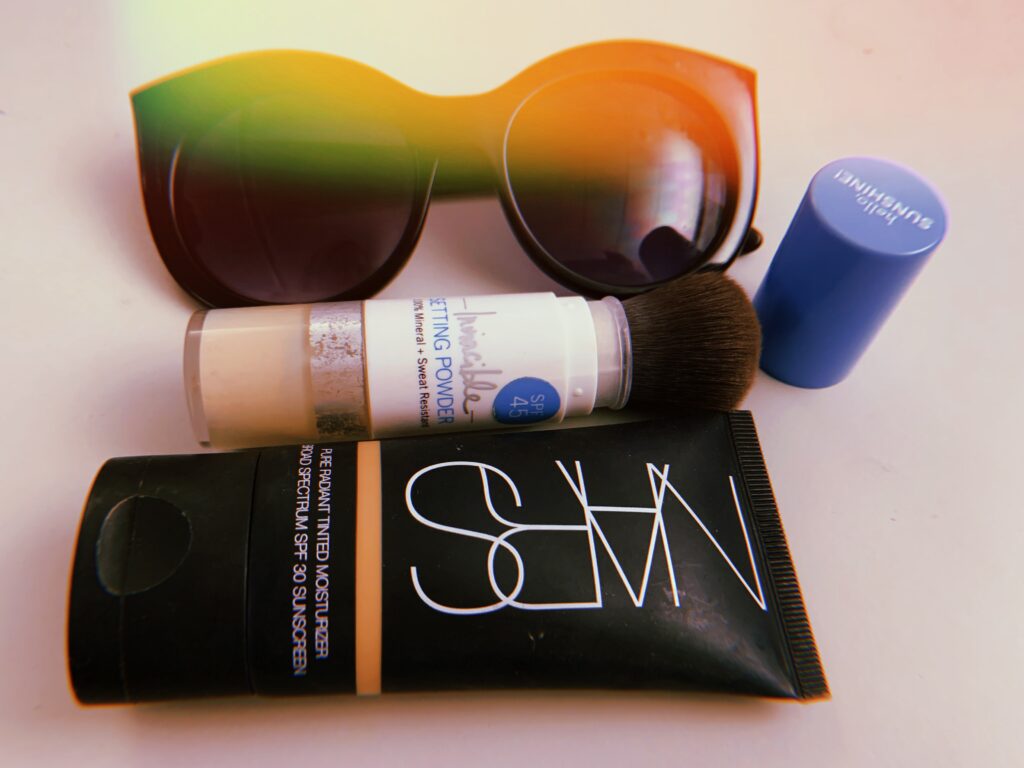We’re all the experts of our own routines but sometimes it’s best to consult the pros.
During this series on sun protection, there’s lots of ground to cover so I enlisted Kara Cordaro, a certified physician assistant (PA-C), for help. Kara gave such detailed answers, I split our interview into two parts. In part 1, Kara goes over how to do an at-home skin cancer check, common misconceptions about sun exposure and when it’s time to consult a doctor.
- Kara Cordaro, PA-C, Lackawanna Valley Dermatology
Any tips on telling the difference between a regular mole or something more sinister?
In dermatology we like to instill the knowledge of the “ABCs of melanoma” with our patients. Always be on the look out for asymmetry; border irregularity; color distribution or multicolors; diameter (greater than 6 millimeters or a pencil eraser); evolution (if it’s changing over time.) I like to tell my patients if it was always brown and resembled the shape of Pennsylvania and now it’s developing pink speckling and looks like Florida, get into the office to be seen. These guidelines do NOT mean that all moles that meet any of the above criteria are melanoma, just a guide of when to have something checked out.
How often should we be checking ourselves for moles, spots, etc.? Should we see a professional?
Self skin checks should be done monthly. I recommend after a shower to really examine yourself head-to-toe using a well-lit room, full-length mirror and a hand mirror to help see areas on the back. It’s super important to get to know your body and to know your normal. If you notice any of the “ABCs,” I would definitely encourage you to schedule an appointment with a dermatologist. I also recommend getting a skin cancer screening exam by a dermatologist or advanced practitioner if you have a family history of skin cancer, have a personal history of excessive sun exposure, have a personal history of indoor tanning or blistering sunburns, and if you’re 50 or older.
What about genetics? Should we look into our family history?
Family history plays a HUGE role in melanoma. Ask your family for some background knowledge. Skin Cancer Foundation published a statistic that “each person with a first-degree relative diagnosed with melanoma has a 50% greater chance of developing the disease than people who do not.” So that statistic alone — plus a history of indoor tanning bed use — automatically warrants the need to see a dermatologist ASAP.
Any sun exposure or sun protection misconceptions you’d like to clear up?
There are a few popular misconceptions to touch on. One being that getting a “base tan” will prevent sunburn and skin cancer. That is totally false. There really is no such thing as a base tan. Every time we tan or burn, we are damaging the DNA in our skin, which increases our risk for skin cancer. According to the American Academy of Dermatology one indoor tanning session can increase the risk of developing skin cancer significantly; melanoma by 20%, squamous cell carcinoma by 67%, and basal cell carcinoma by 29%. Another fun fact from the AAD: “Women who tan indoors before they turn 30 are 6 time more likely to get melanoma, the deadliest skin cancer.”
It’s a common misconception, but tanning beds are definitely worse than natural sunlight, and applying “tanning” lotions and oils is even more torturous. There’s also, “I only need to wear sunscreen when I go to the beach or plan to sit in the sun for hours.”
Sun damage is not caused by warm temperatures and direct sunlight, it is caused by UV radiation, which can penetrate through clouds. Please be cautious and try to protect your skin by at least wearing a daily facial moisturizer containing SPF year-round.
And lastly, if you are concerned about a spot, it is OK to Google it, however please do NOT convince yourself it is something terrible and life-threatening. There are a lot of great mimickers in this world, one being the seborrheic keratosis or the “SK.” These are benign lesions that are notorious for changing size, shape, color and texture, but are not skin cancers and are completely benign. If you spot something suspicious, call a medical professional.

Gia Mazur is an award-winning staff writer and beauty obsessive who joined The Times-Tribune’s Lifestyles department in 2015. She’s a product enthusiast who can’t live without an eyelash curler. A proud Virgo, Charlotte Tilbury Matte Revolution Lipstick in Pillow Talk is her go-to. Contact: gmazur@timesshamrock.com; 570-348-9127; @gmazurTT





